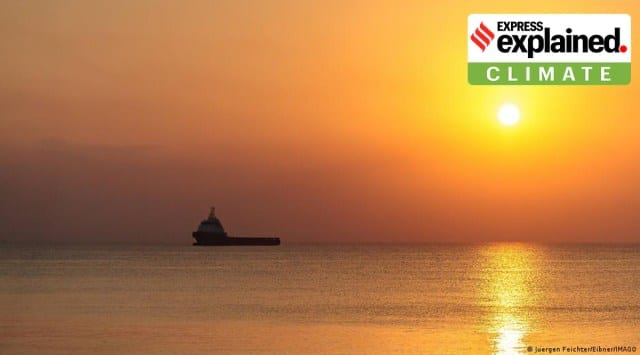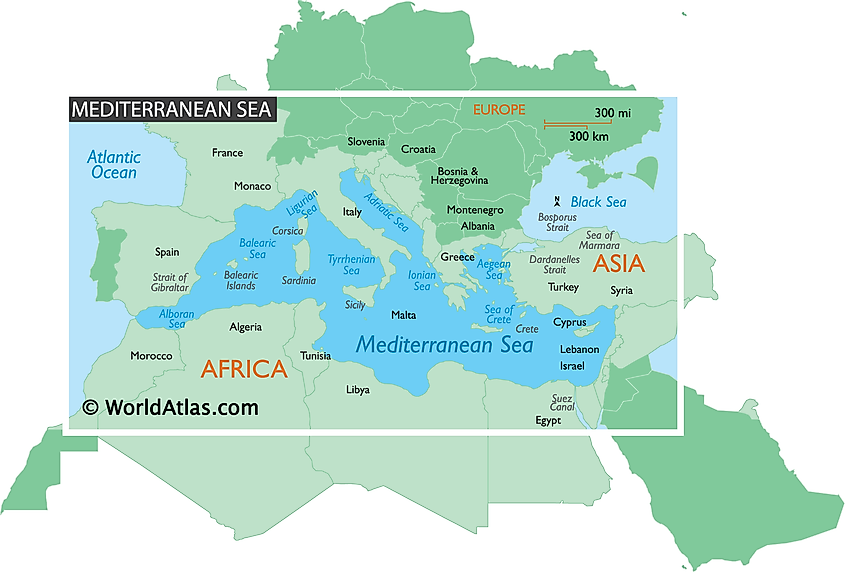Description

Disclaimer: Copyright infringement not intended.
Context
The adverse effects of rising temperatures and heat waves on marine ecosystems in the Mediterranean region.
Details
- Rising temperatures are causing heat waves in the Mediterranean region, impacting both terrestrial and marine ecosystems.
Heatwaves and Marine Ecosystems
- Heatwaves are affecting the Mediterranean, leading to wildfires and elevated sea temperatures.
- High sea temperatures have negative effects on marine creatures due to reduced oxygen availability and increased metabolism.
- Warmer waters promote algal blooms, further depleting oxygen and producing toxins harmful to marine life.
Vulnerable Species and Ecosystems
- Bottom-dwelling species such as corals, mussels, sponges, and sea grasses are most affected.
- Mass deaths of benthic species observed along the Mediterranean coastline between 2015 and 2019.
- Benthic species play a crucial role in water filtration, habitat provision, and food sources.
Impacts on Specific Species
- Neptune grass, a slow-growing seagrass, is vital for carbon storage and habitat creation. Heatwaves threaten its survival.
- Higher temperatures and nutrient run-off lead to jellyfish thriving due to fewer predators and overfishing.
- The Mediterranean hosts around 1,000 invasive species, reshaping ecosystems and reducing biodiversity.
Effects on People and Economy
- Rising sea temperatures disrupt fish populations, leading to more invasive species and difficulties in selling unfamiliar catches.
- Loss of seagrass and fish populations impact tourism, as divers are less likely to visit degraded underwater landscapes.
Mitigation and Solutions
- The primary solution is to curb emissions to prevent further warming of the Mediterranean Sea.
- While direct protection is challenging, making ecosystems more resilient is crucial.
- Controlling agricultural, wastewater, and industrial run-off can mitigate algal blooms.
- Increasing the number of well-managed protected areas can aid ecosystem recovery and reduce disturbances.
Hope for Adaptation
- Invasive tropical seaweed copes well with rising temperatures and may aid seagrass survival.
- Studies show that if exposed to heat as young seedlings, native Neptune grass can adapt to rising temperatures.
About Mediterranean Sea

Disclaimer: Copyright infringement not intended.
- The Mediterranean Sea is a vast body of water located between Europe, Asia, and Africa.
- It holds historical, cultural, and ecological significance due to its central role in trade, civilization, and biodiversity.
Geographical Location
- The Mediterranean Sea is bordered by southern Europe to the north, northern Africa to the south, and southwestern Asia to the east.
- It is surrounded by 21 countries, including Spain, France, Italy, Greece, Turkey, Egypt, and Tunisia.
Physical Characteristics
- The Mediterranean covers an area of approximately 2.5 million square kilometers and has an average depth of around 1,500 meters.
- The Strait of Gibraltar connects the Mediterranean Sea to the Atlantic Ocean, while the Suez Canal links it to the Red Sea.
Climate and Weather
- The region has a Mediterranean climate characterized by warm, dry summers and mild, wet winters.
- The sea's heat-absorbing properties influence regional weather patterns, leading to hot, dry summers and temperate winters.
Biodiversity and Marine Life
- The Mediterranean Sea is home to a diverse range of marine species, including fish, marine mammals, sea birds, and various invertebrates.
- Many species found here are unique to the Mediterranean due to its isolation and distinct environmental conditions.
- Pollution, overfishing, habitat destruction, and climate change pose threats to the region's marine life.
Historical and Cultural Significance
- The Mediterranean region is often referred to as the "Cradle of Civilization" due to its role in the development of ancient cultures like the Greeks, Romans, Egyptians, and Phoenicians.
- It has been a major crossroads for trade and cultural exchange, facilitating the movement of goods, ideas, and people between continents.
Environmental Challenges
- The Mediterranean faces overfishing, resulting in depleted fish stocks and ecosystem imbalances.
- Urbanization and industrial activities contribute to pollution, impacting water quality and marine life.
- Rising sea temperatures, sea level rise, and increased frequency of extreme weather events threaten coastal areas and marine ecosystems.
- The introduction of non-native species disrupts native ecosystems and impacts biodiversity.
Conservation Efforts
- Efforts are being made to establish marine protected areas to conserve biodiversity and ecosystems.
- Initiatives focus on promoting sustainable fishing practices and restoring fish stocks.
- Countries are working to reduce greenhouse gas emissions and adapt to the impacts of climate change.
Economic Importance
- The Mediterranean attracts millions of tourists annually due to its scenic beauty, historical sites, and coastal activities.
- The sea supports a significant fishing industry and serves as a vital trade route.
|
PRACTICE QUESTION
Q) Analyze the ongoing conservation efforts to address threats to marine biodiversity, and evaluate the economic implications of tourism, fisheries, and trade in the Mediterranean. How can international collaboration contribute to the sustainable management of this vital water body? (150 words)
|

https://indianexpress.com/article/explained/explained-climate/extreme-heatwaves-mediterranean-sea-8901948/












